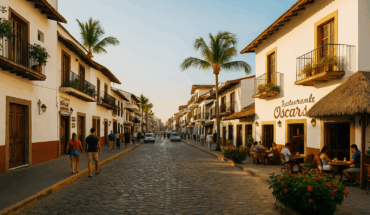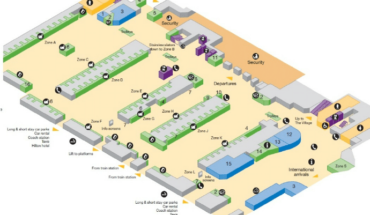
Spain’s eastern coast is where culture, sunshine, and sea air meet in perfect harmony. Stretching from Catalonia to the southern reaches of Valencia, this sun-kissed slice of the Iberian Peninsula offers travellers a rich mix of history, art, modern energy and Mediterranean charm. With fast trains linking major cities and smaller coastal gems waiting to be explored, there’s no better way to experience Spain’s vibrant east than by moving slowly through its rhythms—city to city, coast to coast.
Whether you’re tasting your way through a market in Barcelona, admiring futuristic architecture in Valencia, or catching a flamenco show in a backstreet tavern, the eastern edge of Spain is bursting with stories, soul, and sun.
From the Capital to the Coast
Most travellers begin their journey in Madrid, Spain’s stately and spirited capital. Grand boulevards, world-famous museums, and tree-lined plazas define the city, where tradition and modernity comfortably coexist. But when the coast calls, it’s time to head east—and there’s no easier way than aboard the Madrid – Barcelona train.
In just over two and a half hours, the high-speed AVE train whisks you from the heart of Castile to the buzzing boulevards of Catalonia. It’s a journey that’s as smooth as it is scenic, with changing landscapes unfolding beyond your window—olive groves, mountain ranges, and the first hints of sea.
You arrive in Barcelona feeling the shift instantly. The pace, the light, the energy—it’s a different world, just hours away.

Barcelona: The Bold and the Beautiful
Barcelona isn’t a city you simply visit. It’s a place you feel. It hums with creativity, pulses with passion, and wears its personality with proud flair. You could spend a week here and barely scratch the surface.
At its core is a sense of artful rebellion. From Gaudí’s surreal curves to the bold murals in the Raval district, the city’s visual language is anything but ordinary. The Sagrada Família rises like a dream in stone, and Park Güell’s mosaic lizards and gingerbread gatehouses charm visitors of all ages.
But there’s more to Barcelona than its postcard highlights. Sit at a streetside café in the Gràcia district with a vermouth and olives and watch the world go by. Get lost in the Gothic Quarter’s twisting alleyways. Or rise early and walk the beach at sunrise, when the city feels peaceful and open.
When it’s time to head further down the coast, the train Barcelona to Valencia makes the next leg just as simple. The journey takes around three hours, hugging the shoreline at times, with glimpses of the Mediterranean accompanying you as you travel south to Spain’s third-largest city.
Valencia: A City of Contrasts and Citrus
Valencia often sits quietly in the shadow of its better-known siblings, but those who make the journey quickly discover a city full of contrasts—and charm. It’s a place where futuristic buildings rise beside medieval walls, where orange trees line the pavements, and where the food is as fresh and vibrant as the city itself.
Start in the Old Town, where cobblestone streets wind between historic churches and vibrant squares. The Central Market is a feast for the senses, with mountains of local produce, glistening seafood, and the scent of just-squeezed citrus in the air.
From there, head to the City of Arts and Sciences—an architectural marvel that feels like something out of a sci-fi film. Designed by Santiago Calatrava, its gleaming white structures reflect off shallow pools, and house everything from an opera house to an aquarium.
And of course, no visit to Valencia is complete without tasting paella in the region that gave it to the world. Enjoy it beachside, with the sea breeze and a glass of crisp local white wine. It’s the kind of moment that reminds you why travel is about slowing down and savouring.

Life Along the Coast
One of the true joys of exploring Spain’s eastern cities is how seamlessly urban life meets coastal calm. These aren’t just beach towns or cultural hubs—they’re a beautiful fusion of both.
In Barcelona, you can start your day with museum-hopping and end it with your toes in the sand. In Valencia, green spaces like the Turia Gardens—built on a former riverbed—snake through the city, connecting neighbourhoods with bike paths, playgrounds and quiet corners.
If time allows, smaller coastal towns like Sitges, Tarragona and Dénia are well worth detouring for. Sitges is known for its whitewashed seafront and artistic roots, Tarragona for its Roman ruins and seafood, and Dénia for its slow-living vibe and ferry links to the Balearic Islands.
Every stop adds a new flavour to your journey—more relaxed, more rooted in local life, but always unmistakably Mediterranean.
Travel That’s Easy—and Enriching
What ties all of this together is how effortlessly you can move from place to place. Spain’s train system is fast, comfortable, and scenic. No airport queues, no long transfers—just city-centre to city-centre travel that lets you see more, do more, and relax more.
Better still, each train journey feels like a pause, a moment to reflect between the experiences. Whether it’s the bustling platforms of Madrid, the golden evening light in Barcelona, or the low hum of the train as it cuts across the coastline, the travel becomes part of the story.
Final Thoughts
Spain’s eastern coast is far more than just a string of beautiful cities. It’s a journey of contrasts—between the ancient and the avant-garde, the energetic and the easygoing, the inland heart and the coastal edge. From the cultural treasures of Madrid, to the artistic heart of Barcelona, to the laid-back sophistication of Valencia, each stop reveals another layer of Spain’s personality.
So pack lightly. Bring your curiosity. And follow the coast—not just for the sea and the sunshine, but for the spirit of a country that knows how to live well.


